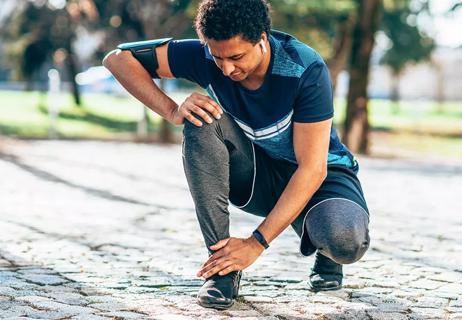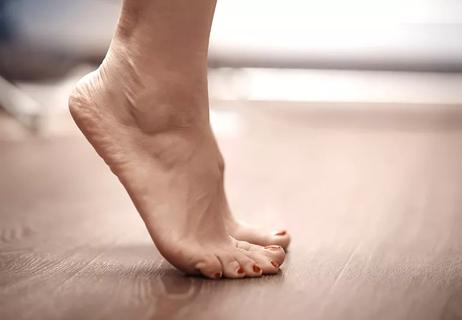Expert advice on when you can treat it at home

Your child comes home from a game, practice or the playground and is limping and complaining about ankle pain. Could something be sprained, strained or — even worse — broken?
Advertisement
Cleveland Clinic is a non-profit academic medical center. Advertising on our site helps support our mission. We do not endorse non-Cleveland Clinic products or services. Policy
It’s very possible. After about age 6, these injuries become much more likely as children start playing sports and becoming more active.
Soccer or basketball, or even just jumping off a moving swing at the playground, can cause an ankle sprain or fracture. And the constant use of certain muscles can cause painful strains. So how do you tell the difference between a strain, sprain or a fracture?
It’s best for parents to decide if the injury needs medical attention, says foot and ankle surgeon Alan Davis, MD, who also specializes in sports health.
The most common ankle injuries for children are:
Advertisement
Figuring out whether an ankle is broken or sprained isn’t always easy to tell. The most obvious symptoms — bruising, pain and swelling — are shared by both injuries. X-rays may be needed to get an accurate diagnosis.
However, there are a few ways to help determine whether you’re dealing with a break or a sprain. Here’s what to consider:
“Unless you know anatomy, it’s usually difficult to differentiate between a sprain, strain and fracture,” Dr. Davis says. “It’s more important for parents to know how urgently an injury needs physician attention, if at all.”
According to Dr. Davis, your child’s ankle injury needs a doctor’s attention if there is:
Dr. Davis says to make sure to check the foot for any tenderness even though your child may be reporting ankle pain.
“These are signs of a serious injury that require immediate treatment,” Dr. Davis says. “Your child may need a splint, brace, boot or cast. If there’s significant damage or risk of damage to the growth plate, surgery may be necessary.”
If the pain is not severe, there is a full range of ankle motion, normal strength, sensation and no misalignment, there is no reason to rush to a doctor, Dr. Davis says.
First, treat the injury at home with the RICE method:
Rest – Just as it sounds. Stay off the injured ankle to prevent more damage. (Want to keep working out? Use the injury as an opportunity to build muscle in other areas of your body.)
Ice – Apply a cold pack or ice bag (in a towel) for up to 20 minutes to reduce swelling and ease pain. Repeat four to eight times a day.
Compression – Wrap the ankle with an elastic bandage or compression wrap to help reduce swelling.
Elevation – Keep the ankle raised by resting it on a pillow or other elevated surface above heart level to reduce swelling and pain.
“If symptoms get worse, then call your doctor,” Dr. Davis says.
Advertisement
The best way to help your child avoid ankle injury is with proper physical conditioning for the sport. That includes:
Wearing appropriate shoes also is important, Dr. Davis says.
“Not all athletic shoes are the same,” Dr. Davis says. “The right shoe depends on your child’s sport with its specific demands, along with your child’s individual foot structure, such as arch height. Shoes always should be fit for sport by an experienced professional. Take your child to a running shoe store where professionals can help with fitting.”
Wraps and braces usually are not necessary for young athletes who are properly conditioned and have no previous injury, Dr. Davis says.
Advertisement
Learn more about our editorial process.
Advertisement

An expert discusses shoes, braces and other ways to support your ankles

You can improve strength and stability with these eight easy exercises

Most recommended precautions center around minimizing bruising or swelling

Even one drink can have an impact on your cognitive function leading to slurred speech, blurred vision and impaired memory

Understand who may (and may not) benefit

Lorem ipsum dolor sit amet. Et odio Quis vel ipsam omnis eum alias deleniti et placeat impedit non voluptas galisum hic autem enim et cupiditate aliquid. Est beatae quidem non facilis autem ut commodi nisi aut tempore rerum et dolores voluptatem cum enim optio id sapiente quasi. Ad laboriosam officiis 33 cupiditate sequi ea voluptatum consectetur qui necessitatibus voluptate et quasi doloremque et facere explicabo quo explicabo officia

Type 2 diabetes isn’t inevitable with these dietary changes

Applying a hot or cold compress can help with pain